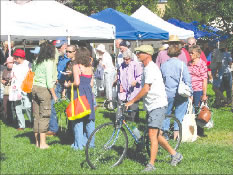By F. Darrell Munsell
Published in 2008 by University Press of Colorado
ISBN: 978-0-87081-934-6
Reviewed by Virginia McConnell Simmons
With its inclusion of Ludlow, the scene of southern Colorado’s most deadly labor fight, From Redstone to Ludlow will hardly be mistaken for a tourist’s guide to Pitkin County’s tiny village of Redstone on the Crystal River. Rather, as the subtitle indicates, the text is a hefty study in Colorado labor history, specifically relating to coal mining. But who is the subtitle’s John Cleveland Osgood, a name that seldom appears in Colorado histories, except in advertisements that might lure travelers to Redstone? As author F. Darrell Munsell shows, he was the stubborn, aggressive leader of mining men in Colorado’s coal and coking industries at the turn of the last century.
Osgood zealously opposed the United Mine Workers of America, from the late 1800s through the Ludlow Massacre in Las Animas County in 1914, and for a short time following it. With Osgood spearheading them, a coalition of mine owners controlled not only coal mining and coke production, but also the National Guard, politics, and even juries in Las Animas and Huerfano Counties. True to our usual image of Gilded-Age industrialists, Osgood ruthlessly demolished his own business partners on his way to controlling many coal mines in southern Colorado and Colorado Fuel and Iron, which he sold to the more well-known Rockefeller-Gould interests. After the tragedy at Ludlow and the warfare that followed it in the coalfields, which Munsell discusses at length, the absentee Rockefellers took an active role in the affairs of CF&I and helped resolve the labor conflict by ostensibly accepting the union in their operations. Eventually, even Osgood had to yield and accept the UMWA at his Victor-American Fuel mines.
Munsell provides a close look at the conditions at mines, which animated the organization of unions, strikes, the Ludlow tragedy, and its violent aftermath. Although the demand for an eight-hour work day is often cited, other fundamental issues stemmed from the fact that coal miners worked with contracts, not for wages. This system led to a variety of abuses, such as paying for a day’s product after it was screened and then weighed. Safety measures, such as timbering, had to be provided by the miners themselves on their own time, resulting in neglect of dangerous conditions. Added to the physical hazards was the employment of inexperienced, cheap labor by companies, a practice that also contributed to animosities among workers.
At the time of the Ludlow Massacre, a milquetoast named Elias M. Ammons was Colorado’s governor. He was followed a year after Ludlow by Governor George A. Carlson, a political pawn of the forces that were resisting change. During this period of turmoil, as Munsell details, women played an active role, some of them resisting reform and others demanding it, and the labor activist “Mother Jones” (Mary Harris) was an indefatigable presence, rallying protestors. The roles of public opinion and the intervention of President Woodrow Wilson provide interesting information about the labor war, which involved more than Ludlow or, certainly, Redstone, as readers will discover.
Despite the title of this book, discussion about Redstone is relatively brief. In fact, one suspects that Munsell’s interest in Redstone resulted from Munsell’s move to the Crystal River area when he retired as professor emeritus from West Texas A&M University and became involved with the Redstone Historical Society. The significance of Redstone lies in the purpose of Osgood, the benevolent lord of the manor, who hoped to improve conditions for the working class through social programs and enlightenment, rather than through labor unions — clearly, anything but unions. The construction of Redstone as a company town, its coke ovens, and the occasional residence of Osgood at Cleveholm Manor (now often called Redstone Castle) are described, but this reviewer wished for additional information about the economic causes of their brief survival. Osgood also introduced similar projects in other company towns with mixed results, and many readers will find the pages covering these undertakings to be especially interesting.
Several photographs and one map of the Ludlow area illustrate the text. Unfortunately, the text mentions many unfamiliar names of mines and companies without adequate identifications or locations, for which supplementary lists and maps might have been useful, and readers may regret a dearth of information about coalfields outside southern Colorado, such as those in central, western, and northwestern Colorado. An extensive bibliography will direct readers to several other sources about coal mining and about Colorado’s labor history, however.
Virginia McConnell Simmons is an author, historian, and columnist, living in the San Luis Valley.

